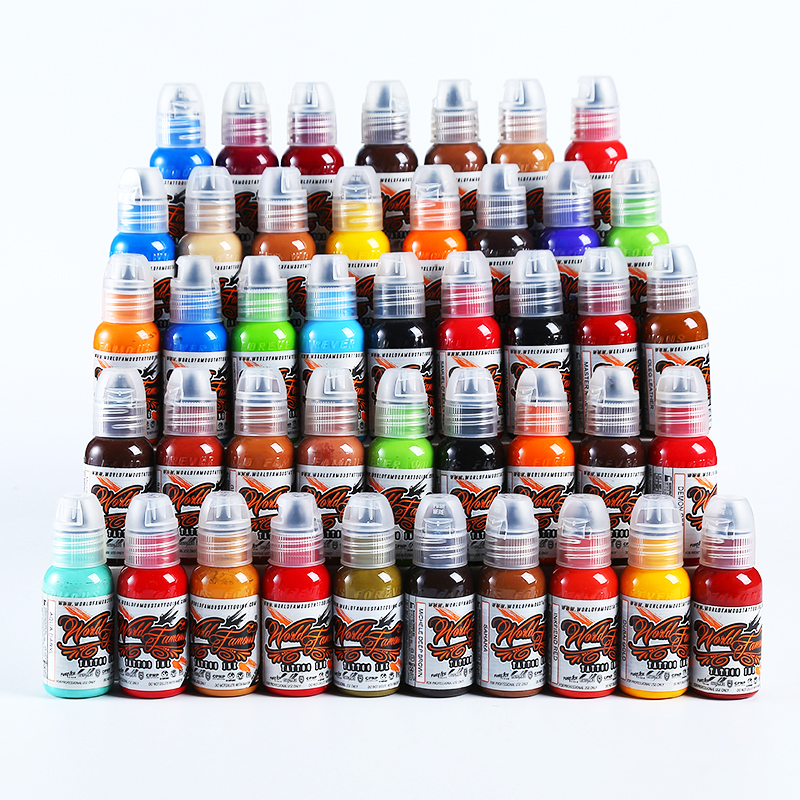The Evolution of Tattoo Inks: From Traditional to Modern Formulations

Tattoos have a rich history spanning thousands of years, and throughout this time, the tattoo inks used to create these intricate designs have undergone a significant evolution. From the traditional inks made from natural ingredients to the modern formulations that provide enhanced color vibrancy and longevity, the world of tattoo inks has witnessed remarkable advancements. In this article, we will explore the evolution of tattoo inks, from their humble beginnings to the cutting-edge formulations used today.
Traditional Tattoo Inks: In ancient times, tattoo inks were created using natural materials readily available in the environment. These materials included plant extracts, minerals, and even animal-derived substances. For example, burnt wood or ash was used to create black ink, while crushed shells or minerals provided pigments for other colors. These traditional tattoo inks were mixed with water or other natural liquids to form a paste that could be applied to the skin using primitive tattooing techniques.
Early Modern Tattoo Inks: With the advent of modern tattooing techniques in the late 19th century, tattoo inks began to evolve. In the early stages, inks were composed of pigments mixed with alcohol or water. However, these inks had limitations in terms of color vibrancy, longevity, and the ability to withstand the test of time. Tattoo artists had to work with the limited color palette available, primarily consisting of black, red, green, and blue.
Introduction of Synthetic Pigments: The mid-20th century marked a significant turning point in the history of tattoo inks with the introduction of synthetic pigments. These pigments were created through chemical processes, providing a wider range of vibrant colors that were not previously achievable. Synthetic pigments allowed for more creative expression in tattoo designs, enabling artists to explore a broader spectrum of hues and shades. Additionally, these pigments exhibited better color retention and improved longevity, ensuring that tattoos maintained their vibrancy over time.
Advancements in Ink Formulations: As technology and scientific knowledge advanced, tattoo ink formulations continued to improve. Modern tattoo inks are now composed of a combination of pigments, carrier fluids, and additives. The pigments used today are typically organic or inorganic compounds specifically selected for their color stability and safety. These pigments are micronized, meaning they are ground into extremely fine particles to ensure smooth application and even distribution within the skin.
Carrier fluids play a crucial role in the formulation of tattoo inks. Water, alcohol, glycerin, and witch hazel are commonly used as carrier fluids, depending on the desired consistency, drying time, and workability. The carrier fluids suspend the pigments and facilitate their application, allowing tattoo artists to create precise and intricate designs.
In addition to pigments and carrier fluids, modern tattoo inks often contain additives that serve various purposes. These additives can include preservatives, thickeners, and stabilizers, all aimed at improving the overall quality, safety, and performance of the ink. Manufacturers adhere to strict regulations and quality control measures to ensure that tattoo inks meet safety standards and are free from harmful contaminants.
Specialized Inks for Specific Styles: As tattooing has evolved into a diverse art form with numerous styles and techniques, specialized inks have been developed to cater to specific design preferences. For example, watercolor-style tattoos often utilize inks with a more diluted consistency, allowing for seamless blending and soft transitions between colors. Blackwork tattoos, on the other hand, rely heavily on deep black inks with high opacity and saturation.





